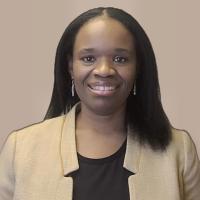“For students with autism or other special needs, the optimal goal is always an inclusive education,” says Ebony Holliday, PhD, assistant director of Community Programs at Kennedy Krieger Institute’s Center for Autism Services, Science and Innovation (CASSI). In this clip, she gives some examples of how services and support for autistic students are becoming more common and more inclusive.
This video appears in:
Transcript
I think for children and for students with disabilities and autistic students, the goal is always that inclusive education. So we always want to make sure that we are prioritizing inclusion that children or students with disabilities, including autism, are really have access to their peers throughout the day that are in environments, going to different types of activities where they’re able to access the typical school environment. They have the ability to really take part in all of those activities. So I feel like inclusion is always that optimal ideal. Of course, it’s going to be different for every student. Some students might need different types of and more supportive educational environments while others might be able to be in different environments throughout the school day. So there is, I definitely think more effort and more focus on making sure that that inclusion piece is there. There is more, I think, increasing efforts on training and inclusion.
And I know just on a personal level, I’m definitely seeing more teachers and especially early childhood educators asking for more training and saying that we need more training in these areas to be able to serve children. We are identifying more children earlier, and so we’re seeing students in early childhood environments and elementary schools that have new and different needs than maybe some teachers and some educators have been used to than in the past. So that is definitely a need that is there for training and also to make sure that we’re supporting teachers in these environments in their classrooms, so they do have the skills and the knowledge and the resources to be able to implement and serve autistic students.
